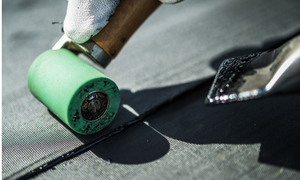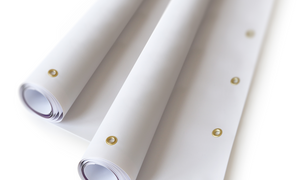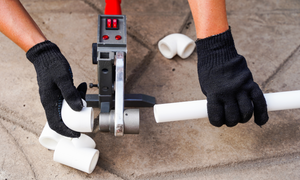How to Create Pendulum Welds in 6 Simple Steps

What’s your go-to method for plastic welding in tight areas?
Though common, these welding scenarios can pose some of the greatest difficulties when it comes to accuracy, efficiency, and precision.
And while there are a variety of methods for plastic welding, pendulum welding is a proven strategy for confined or seemingly unreachable areas.
What is Pendulum Welding?
Pendulum welding is a method of plastic welding primarily used for small welds or welds in hard-to-reach areas.
Named for the back-and-forth motion required to complete this weld, pendulum welds typically take a longer time to complete than other types of welds, such as speed or extrusion welds.
How to Pendulum Weld
While performing your first pendulum weld can be challenging, it can be done in a six simple steps:
- Clean and prepare your welding surface. Remove any contaminants on the plastic, as they can impair your weld quality.
- Cut the welding rod to a point. This will help create an even flow of plastic.
- Tilt your welding rod to the base material. The angle of the tilt depends on the type of plastic you’re welding and the area you’re welding.
- Place your hot air tool nozzle, such as the IHS 5-mm Diameter Tubular/Adapter Nozzle or IHS 5-mm Diameter Extended Tubular Nozzle, at an angle from the opposite direction of your welding rod, slightly above the joint or crack. You want to ensure the heat from your hot air tool has a direct, uninterrupted path to your welding rod. Also, keep in mind that pendulum welds are usually created with 5-mm round tubular nozzles, which allow the heated air flow to be evenly concentrated to plasticize or melt both the welding rod and substrate being welded.
- Slowly swing your hot air tool back and forth, creating an even joint with the welding rod. Take your time, because rushing this step can result in an inconsistent weld. If possible, aim to create one smooth, continuous weld. Smaller movements allow for more control and a more precise weld.
- Give your weld time to cool. Allow at least five minutes for your weld to cool, as continuing to work before the weld cools will result in a weakened bond. You can test the temperature of the weld by passing your hand over the area and gauging the heat level.
Tools for Pendulum Welding
Because pendulum welds are performed in smaller areas, hot air hand tools are ideal instruments for these applications. Compared with extrusion welders and industrial extrusion welders, the compact size of hot air hand tools allows for easier welding in tight spaces.
Hot air tools such as the IHS Type 1600 Hot Air Tool, Forsthoff Mini Electronic Hot Air Tool, and HSK Model 300 Quick L Hot Air Tool can be used to perform accurate and efficient pendulum welds.
Plastic Welding? Use These Tools to Boost Your Efficiency.
At IHS, we offer hundreds of hot air tools designed for your every plastic welding need—from automatic welders to hot air hand tools to extrusion hand welders and industrial extrusion welders. With our decades of experience, we can help you choose the right tool for your application. Contact us today and we can help you achieve your plastic welding goals.
- Robert Heater







